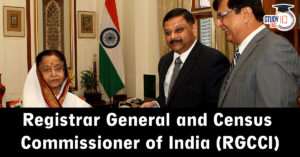Table of Contents
President’s Rule
Article 356 of the Indian Constitution provides an explanation of the President’s Rule. According to this Article, the President may issue a proclamation declaring a state of emergency if he determines, after receiving a report from the state’s governor or through other means, that a situation has occurred that makes it impossible for the state’s government to function normally.
The President may declare a state of emergency in such a case by issuing a “proclamation on account of the failure (or breakdown) of constitutional machinery in the State.” ‘State Emergency’ or ‘Constitutional Emergency’ is other names for it. President’s Rule is an important topic of Indian Polity which an important subject in UPSC Syllabus. Students can also go for UPSC Mock Test to get more accuracy in their preparations.
Meaning of President’s Rule?
Any state that wishes to be under the President’s Rule must first receive the consent of the legislature. Within two months of its issuance, the President’s Rule proclamation must be ratified by both Houses of Parliament. The decision is approved by a simple majority. The President’s Rule is in effect for a six-month trial period first. Later, it can be renewed every six months for an additional three years with parliamentary approval.
The President’s Rule cannot be imposed for more than a year according to restrictions imposed by the 44th Amendment to the Constitution of India (1978). Unless there is a national emergency in India and the Election Commission of India certifies that it is necessary to retain the President’s Rule in the state due to difficulties in conducting assembly elections in the state, it states that President’s Rule cannot be extended beyond one year.
President’s Rule Grounds of Declaration
According to Article 355 of the Indian Constitution, the central government has the responsibility to protect each state from outside attacks and internal problems. It also needs to make sure that each state’s government follows the Constitution. If a state’s government isn’t working properly, the central government can take over under Article 356. This situation is called President’s Rule. President’s Rule can be declared for two main reasons: the conditions mentioned in Article 356 and those in Article 365.
Article 356: The President can impose President’s Rule if it’s deemed that a state’s government can’t function per the Constitution. This can be based on the Governor’s report or independently.
Article 365: If a state fails to comply with directions from the Centre, the President can declare that the state government can’t function as per the Constitution.
President Rule Duration and Parliamentary Approval
A proclamation of President’s Rule must be approved by both Houses of Parliament within two months. If the Lok Sabha is dissolved during this time, the proclamation remains in effect until 30 days after the new Lok Sabha first meets, as long as the Rajya Sabha approves it in the meantime.
Approval
If both Houses of Parliament approve it, the President’s Rule lasts for six months. It can be extended for up to three years, with Parliament’s approval every six months. If the Lok Sabha is dissolved during this period without approving an extension, the rule continues for 30 days after the new Lok Sabha meets, as long as the Rajya Sabha has approved it.
According to the 44th Constitutional Amendment Act of 1978, President’s Rule can be extended beyond one year in six-month intervals only if there is a National Emergency and the Election Commission says elections can’t be held due to specific issues.
Any resolution to approve or extend President’s Rule only needs a simple majority from either House of Parliament (more than 50% of those present and voting).
President Rule Revocation
A new proclamation can change or cancel a previous one, but only the President can withdraw it. A proclamation made under Article 356(1) will expire if it isn’t approved by both Houses of Parliament within two months. If it’s presented but not approved by either House, it can end even sooner. After six months, if no new resolution is passed, the proclamation will also expire.
After six months from the last approval, the proclamation can last up to three years. It can be extended for one more year if a National Emergency is in effect or if the Election Commission says elections can’t be held.
President’s Rule and Judicial Review
By virtue of the 38th Amendment Act of 1975, the President’s approval to use Article 356 became definitive and binding and could not be disputed in court on any grounds. However, this provision was eventually eliminated by the 44th Amendment Act of 1978, thus the President’s satisfaction is now susceptible to court scrutiny.
President’s Rule Effect
Effects of President’s Rule on State Executive
When President’s Rule is imposed, the President dismisses the State Council of Ministers, led by the Chief Minister. The State Governor manages the administration with the Chief Secretary or appointed advisors. This is why it’s known as “President’s Rule.”
Effects on State Legislature
The President can suspend or dissolve the State Legislative Assembly. Parliament then handles State Legislative Bills and the State Budget, and can issue ordinances when Parliament is not in session. If the State Legislature is dissolved, Parliament can delegate law-making powers to the President or another authority. Laws made during this time remain valid even after President’s Rule ends but can be changed by the State Legislature.
Effects on State Judiciary
During the President’s Rule, the President cannot take over the High Court’s powers or suspend related constitutional provisions. The High Court’s status, powers, and functions remain unchanged throughout the President’s Rule.
President’s Rule and Article 356
The hope of Dr. B.R. Ambedkar was that Article 356 would be rendered meaningless. However, knowledge has it that Article 356 has evolved into a lethal weapon. It was first used in 1951 (Punjab) and has since been used more than one hundred times.
In response to the 1992 imposition of presidential rule in Madhya Pradesh, Himachal Pradesh, and Rajasthan, the Supreme Court in 1994 set rules in the case of S.R. Bommai v. Union of India (9 Judge Bench). Even though the 38th constitutional amendment legislation had rendered judicial review of presidential satisfaction impossible. The same is now open to judicial review thanks to the 44th Constitutional Amendment Act.
Nullification of President’s Rule
Any time in the future, the President may issue a proclamation that nullifies President’s Rule. A declaration of revocation does not require approval from the Parliament. A political party’s leader can formally declare his intention to form the state government by submitting letters attesting to the assembly’s majority support for him. Additionally, the President’s Rule was subject to a number of restrictions for more than a year as a result of the 44th Amendment to the Constitution of 1978.
According to the amendment, the president’s rule in a region can only is extended after a year if India is experiencing a national emergency and the election commission of India declares that it is necessary due to difficulties in holding assembly elections in the area.
Criticism in President’s Rule
The provisions of the President’s Rule have faced criticism for several reasons:
- Potential for Misuse: The broad powers can be misused by the central government to dismiss state governments led by opposition parties.
- Undermining Federalism: It can violate federal principles by allowing the central government to override elected state governments.
- Lack of Clear Criteria: The Constitution does not clearly define when the President’s Rule should be imposed, leading to claims of unfair use.
- Suspension of Democratic Process: The suspension of the State Legislature and concentration of power in the Governor’s hands can hinder democracy.
- The tendency towards Centralization: Frequent use of the President’s Rule contributes to centralization, reducing state autonomy.
- Impact on Development: The instability from the President’s Rule can disrupt development, delaying policies and making long-term planning difficult.
Significance of President’s Rule
Ensuring Continuity of Governance: The President’s Rule helps maintain stable governance when a state government can’t function properly, preventing administrative breakdown.
Upholding Constitutional Order: It aims to restore constitutional order when a state government fails to follow the Constitution, protecting democracy.
Crisis Management: It allows the central government to step in and manage the state during political instability, law and order issues, or other crises.
Protecting National Interests: The President’s Rule can help safeguard national interests, including the unity, integrity, and security of India.
President’s Rule UPSC
The possibility of abuse of power exists even if Article 356 is modified while taking into account every suggestion made by the Sarkaria Commission, as the success of any law depends on how well it is implemented. Therefore, when choosing a President’s Rule, a strict interpretation of Article 356 can only be expected to maintain the spirit of “co-federation,” and the union administration should refrain from abusing this power for personal political gain. Students can read all the details related to UPSC by visiting the official website of StudyIQ UPSC Online Coaching.


 Mechanisms to Combat Judicial Corruption...
Mechanisms to Combat Judicial Corruption...
 Registrar General and Census Commissione...
Registrar General and Census Commissione...
 Ambedkar Jayanti 2025: Biography, Legacy...
Ambedkar Jayanti 2025: Biography, Legacy...





















